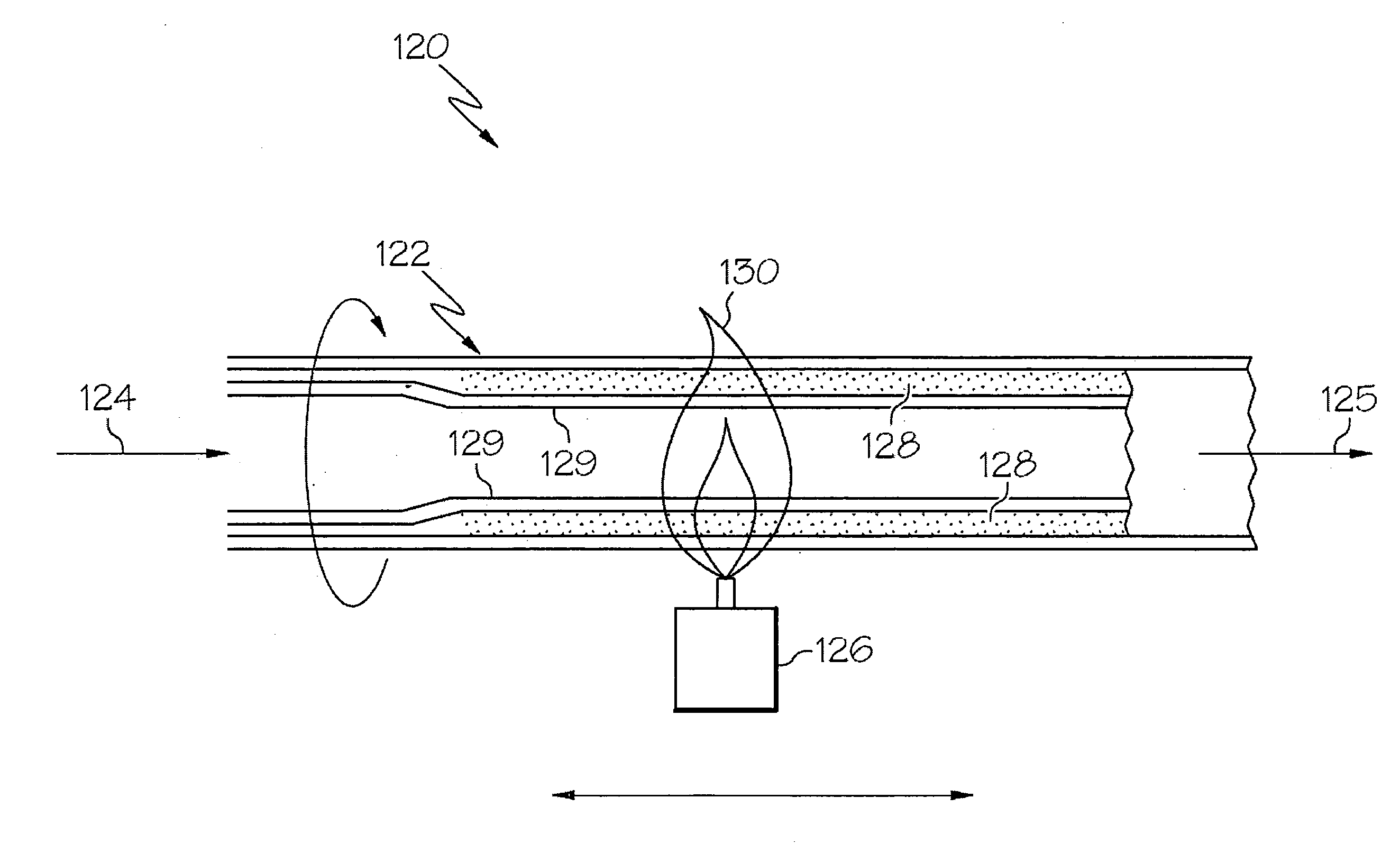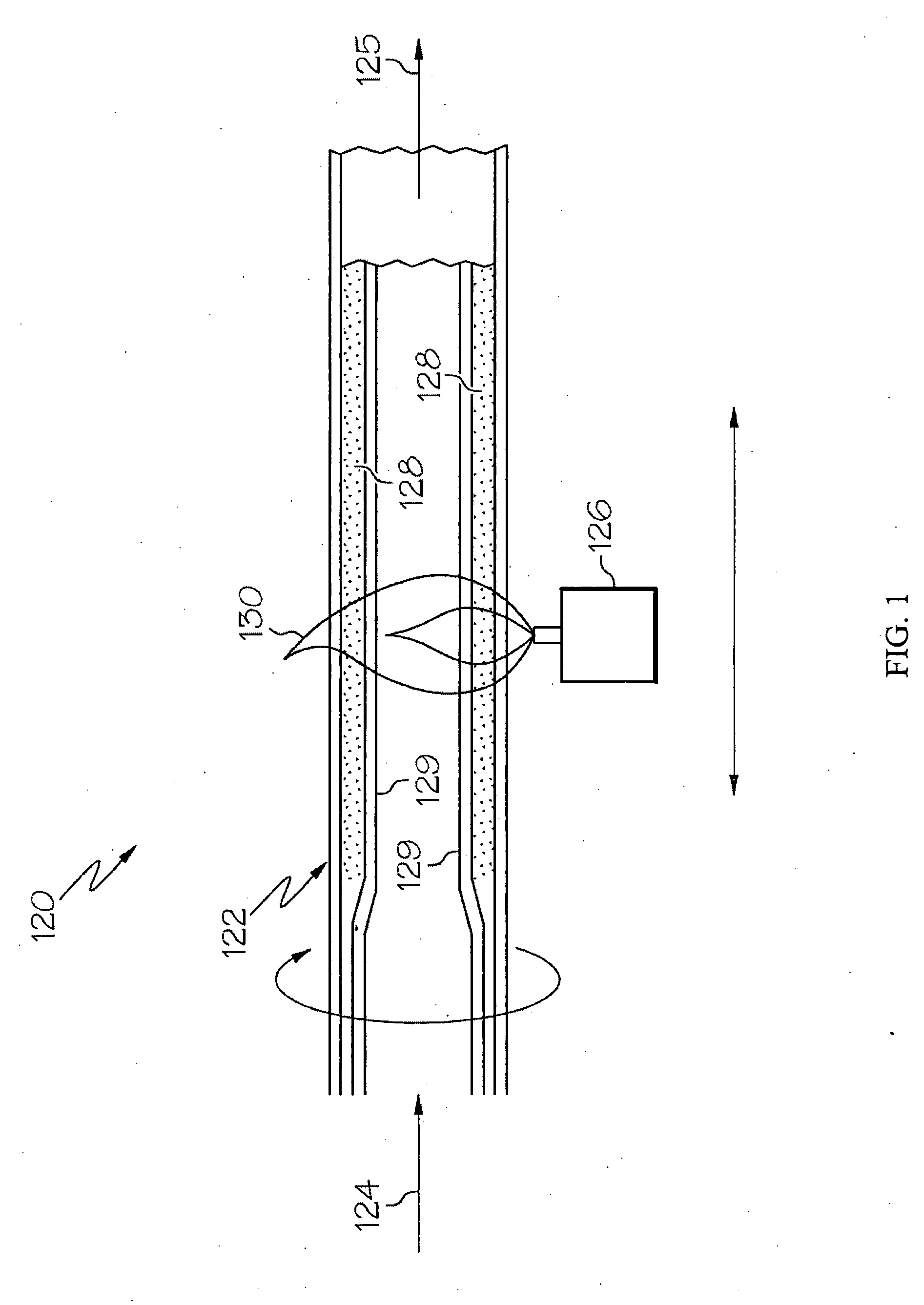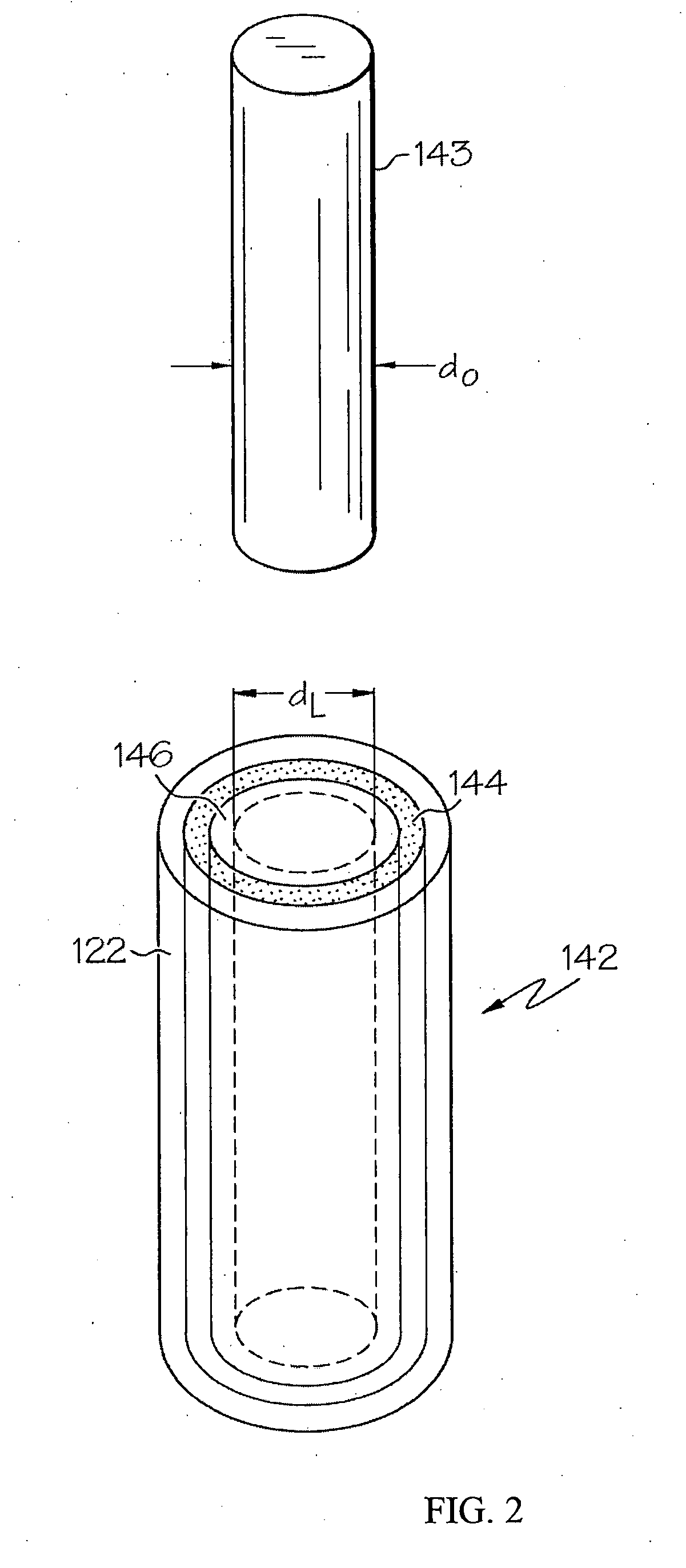Methods for making optical fiber preforms and microstructured optical fibers
- Summary
- Abstract
- Description
- Claims
- Application Information
AI Technical Summary
Benefits of technology
Problems solved by technology
Method used
Image
Examples
Embodiment Construction
[0015]The methods of the present invention utilize modified chemical vapor deposition (MCVD) techniques to form optical fiber preforms having a non-periodic distribution of gaseous voids. The resultant preform is used to produce a microstructured optical fiber. The microstructured optical fiber has a non-periodic distribution of voids formed from the gaseous voids in the preform.
[0016]FIG. 1 is a schematic diagram of a MCVD operation 120 for making an optical fiber preform in accordance with the present invention. As shown in FIG. 1, a substrate tube 122 is positioned relative to a heat source. The heat source may comprise, without limitation, a burner, an electric resistance heater, an inductance heater, or an outside plasma torch. In the embodiment shown in FIG. 2 the heat source is a burner 126. Fuel, such as methane (CH4), and combustion supporting gas, such as oxygen, are supplied to the burner 126 and ignited to form the flame 130. Alternatively, the fuel supplied to the burne...
PUM
| Property | Measurement | Unit |
|---|---|---|
| Thickness | aaaaa | aaaaa |
| Thickness | aaaaa | aaaaa |
| Thickness | aaaaa | aaaaa |
Abstract
Description
Claims
Application Information
 Login to View More
Login to View More - R&D
- Intellectual Property
- Life Sciences
- Materials
- Tech Scout
- Unparalleled Data Quality
- Higher Quality Content
- 60% Fewer Hallucinations
Browse by: Latest US Patents, China's latest patents, Technical Efficacy Thesaurus, Application Domain, Technology Topic, Popular Technical Reports.
© 2025 PatSnap. All rights reserved.Legal|Privacy policy|Modern Slavery Act Transparency Statement|Sitemap|About US| Contact US: help@patsnap.com



